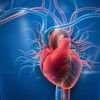Understanding Coronary Artery Disease: Key Insights and Treatment Options
- What Is Coronary Artery Disease (CAD)?
- Symptoms of Coronary Artery Disease
- Risk Factors for CAD
- Diagnosing Coronary Artery Disease
- Treatment Options for CAD
- Preventing Coronary Artery Disease
1. What Is Coronary Artery Disease (CAD)?
Coronary artery disease (CAD), also known as coronary heart disease (CHD), is a condition where the coronary arteries become narrowed or blocked due to the buildup of plaque. Plaque is a mixture of fat, cholesterol, and other substances that clog the arteries and restrict blood flow to the heart. As a result, the heart does not receive enough oxygen-rich blood, which can lead to chest pain (angina), heart attacks, and other serious complications.
Understanding CAD is crucial, as it is one of the leading causes of heart disease worldwide. Its gradual development means that people may not notice symptoms until the condition has advanced significantly. However, early detection and management can prevent severe outcomes and improve overall heart health.

2. Symptoms of Coronary Artery Disease
Coronary artery disease often develops slowly and may not show noticeable symptoms until the arteries are significantly blocked. Common symptoms of CAD include:
- Chest Pain (Angina): One of the most common symptoms of CAD, angina occurs when the heart does not get enough blood. This pain can feel like pressure, tightness, or heaviness in the chest.
- Shortness of Breath: Reduced blood flow to the heart can lead to difficulty breathing, especially during physical activity.
- Fatigue: A feeling of tiredness or weakness, even with minimal activity, can be an indicator of CAD.
- Heart Palpitations: Irregular heartbeats or a racing heart can signal an issue with coronary arteries.
It's important to note that some people with CAD may not experience any symptoms at all until a heart attack occurs. This is why regular check-ups and a proactive approach to heart health are essential.
3. Risk Factors for CAD
Several factors can increase the risk of developing coronary artery disease. Some are controllable, while others are genetic or linked to age. The most common risk factors include:
- High Blood Pressure: Increased pressure in the arteries can damage the artery walls and make them more susceptible to plaque buildup.
- High Cholesterol: Elevated levels of low-density lipoprotein (LDL) cholesterol, or "bad" cholesterol, contribute to plaque formation.
- Diabetes: Diabetes and high blood sugar levels can accelerate the development of plaque in the coronary arteries.
- Smoking: Smoking damages the blood vessels and accelerates plaque buildup, making it one of the most dangerous risk factors for CAD.
- Family History: A family history of heart disease can increase the likelihood of developing CAD.
- Age: The risk of CAD increases with age, especially for men over 45 and women over 55.
- Sedentary Lifestyle and Poor Diet: Lack of exercise and a diet high in saturated fats and processed foods are also significant contributors to CAD.
4. Diagnosing Coronary Artery Disease
Diagnosing coronary artery disease involves a combination of medical history, physical examinations, and tests. Your healthcare provider may recommend one or more of the following:
- Electrocardiogram (ECG or EKG): This test measures the electrical activity of the heart and can detect signs of heart disease or a heart attack.
- Stress Test: A stress test monitors how the heart performs during physical activity or stress. It can help identify if there are any issues with blood flow to the heart.
- Coronary Angiography: In this procedure, a special dye is injected into the coronary arteries, and X-rays are used to detect blockages or narrowing in the arteries.
- Blood Tests: Blood tests can help check cholesterol levels, blood sugar levels, and other factors that contribute to CAD.
5. Treatment Options for CAD
The treatment for coronary artery disease depends on the severity of the condition. In many cases, lifestyle changes, medications, and, in some instances, surgical procedures are required to manage CAD:
- Lifestyle Changes: Eating a heart-healthy diet, exercising regularly, quitting smoking, and managing stress are all essential in managing CAD and preventing further damage.
- Medications: Statins, blood thinners, and other medications can help control cholesterol, reduce blood pressure, and prevent blood clots.
- Angioplasty and Stenting: If there are significant blockages, angioplasty may be performed to open up narrowed arteries. A stent (a small mesh tube) may be inserted to keep the artery open.
- Coronary Artery Bypass Grafting (CABG): In more severe cases, bypass surgery may be necessary to reroute blood flow around blocked arteries.
6. Preventing Coronary Artery Disease
Prevention is key when it comes to coronary artery disease. While some risk factors are beyond control, adopting a healthy lifestyle can significantly reduce the chances of developing CAD. Here are some tips for prevention:
- Maintain a Healthy Diet: Eat a diet rich in fruits, vegetables, whole grains, and lean proteins while limiting saturated fats, salt, and sugar.
- Exercise Regularly: Aim for at least 30 minutes of moderate exercise most days of the week to improve cardiovascular health.
- Monitor Your Health: Keep track of your cholesterol, blood pressure, and blood sugar levels, and manage them with the help of your healthcare provider.
- Avoid Smoking: If you smoke, quitting is the most effective way to reduce your risk of CAD.
Understanding coronary artery disease and its risk factors can empower you to take control of your heart health. By adopting a healthier lifestyle and seeking regular check-ups, you can manage or even prevent CAD. If you're concerned about your heart health, talk to your doctor about ways to monitor and protect your cardiovascular system.






















UVA Health UVA Cardiology, part of Culpeper Medical Center
uva coronary care unit
501 Sunset Ln, Culpeper, VA 22701, USA